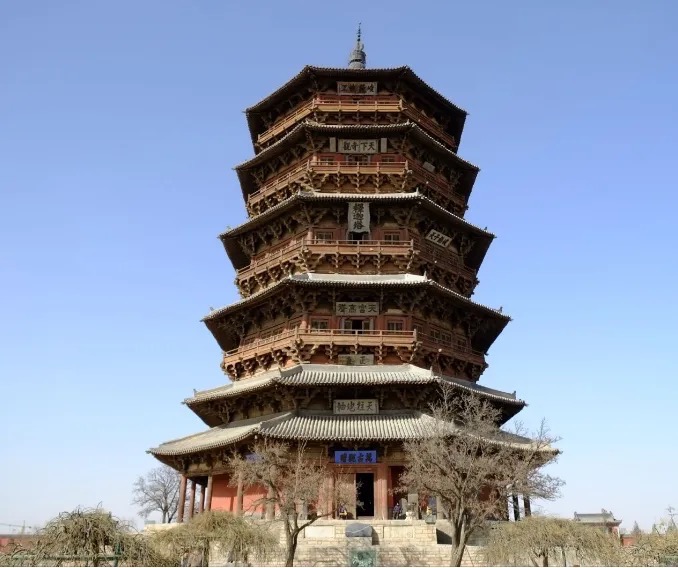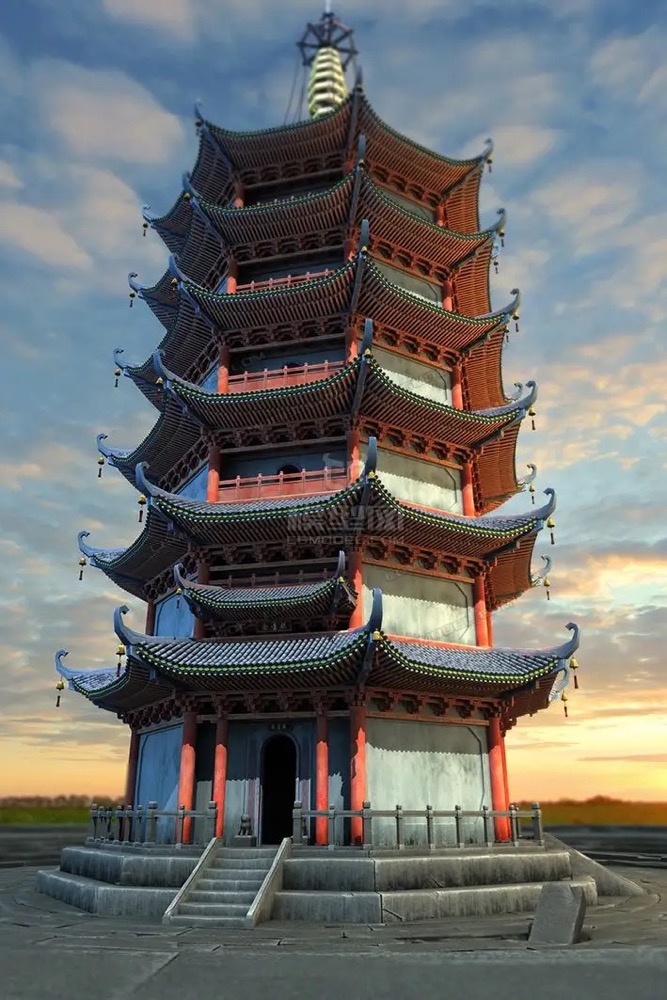A Pagoda is a multi-story structure in China and Asia at large. The structure is associated with Buddhism and has traces of origin in Ancient India. The oldest versions were made of wood, while late vrsions were constructed with bricks and stone. Their intended use was to store and preserve Buddhist relics and artifacts.
What is a Chinese pagoda called?

A Chinese pagoda is called a fota. This ancient architecture is always located near or in Viharas. These are Buddhist monasteries that are associated with dwellings for the monks. The name pagoda was only heard in the first century after Buddhism spread across the country from India. The Chinese people had lots of architecture, and the pagoda was introduced at the beginning of the first century.
What does a Chinese pagoda look like?
This ancient architecture is a multi-story structure with several eaves. It resembles a tower, and is made with bricks, stone, or wood. When this structure was introduced to the Chinese culture, I came up with Indian designs and architecture. However, the Chinese adopted their unique designs to build a structure that resonated with their culture. The most common technique was called bracketing, which used bricks to strengthen the structure without using concrete.
The bricks were stacked and interlocked. The later pagodas were octagonal, circular, or hexagonal. While designs may vary, most Chinese pagodas come in four architectural elements. The first space is an underground palace, then a base, a body, and a steeple. The cone-like shape was prevalent in ancient China, but new and modern designs have taken shape in recent times.
What is Pagoda in ancient China?

A pagoda was a structure used by Buddhists and Taoists for the preservation and protection of their religious artifacts and relics. This structure was largely introduced to China in the Han dynasty of 206 BCE to 220 AD. When India and Nepal expanded their trade to other countries, they tagged along their culture and religion, and that’s how the pagodas came along with Buddhism. The original pagodas were square, but the Chinese culture improvised to incorporate their architecture.
The result was a cone-shaped, multi-story tower. Ancient designs were made with wood in 500 AD, but long-lasting materials like bricks came later. The first brick pagoda was erected in 520 AD. In the Song dynasty, the structures began to be built away from temples and became stand-alone buildings that were secular and could be used for other functions other than religious use.
What is a Chinese pagoda used for?
In ancient China, the pagoda was solely for religious purposes and was used to store Buddhist relics and artifacts. The Buddha statues and scriptures were safely kept in these towers that were strategically built near viharas. In modern Chinese culture, the pagodas have steered away from religion and have become cultural. In ancient China, these structures were also used for prayers by civilians and travelers. They believed that prayers made in the pagoda would prevent natural disasters from befalling the traveler’s home or country. It was also believed that prayers inside this structure wadded off evil spirits and attracted good fortunes.
Chinese Pagoda symbolism
These Chinese structures symbolized sacred mountains. They were viewed as sacred places where precious relics and scriptures were preserved. In ancient times, the pagodas were used as tombs for kings and Saints. The structure was also believed to bring good luck to students undertaking the Chinese civil service exams. This trait was symbolic of the resilience of the pagodas. In 1220, a pagoda in Fuzhou collapsed. This disaster was associated with the recent failure of exams in the region. As a result, the structure was rebuilt in 1223, and the names of successful students inscribed on the walls to attract good karma to the region.
Chinese pagoda history
The pagoda traces its origin in India and is associated with Buddhist temples and religious artifacts. Its origin is related to the Stupa in the 3rd century, and it was a dome-shaped monument that housed sacred writings and relics. In China, the pagoda found its way into the country through trade and the spread of Buddhism. However, it did not retain its original style as it was infused with Chinese traditional architecture. The result was a tall, thin tower with multiple stories. In some regions, the wealthy and powerful had the pagodas built as a show of might. Some offer their palaces for the building of pagodas that would be strategically constructed on the rooftops. The first Chinese pagoda was built in 68 AD and was famously known as the White horse pagoda. The initial material used in construction was wood.
How to Build a Chinese Pagoda
In ancient times, a pagoda was built using wood. The structure was not long-lasting, and other materials were introduced. The most common materials were bricks, and the Chinese used a technique called bracketing where bricks were interlocked in place. In most instances, the structures are built hollow or solid using stone, wood, or brick. Mostly, the banisters, eaves, and verandas are solely wooded. There is a massive brick pillar that supports the structure roof. There is a central pillar that connects all the floors to integrate the entire structure. The windows are placed high above the wall to allow light and also give a good view. The interior and exterior are decorated with colorful ornaments and precious stones.
Difference between Chinese and Japanese pagodas
The most notable difference between the two structures is the material used in construction. The Chinese versions are more elegant and polished than the Japanese. Chinese architecture incorporates luxurious ornaments, precious stones, and porcelain in its décor. On the other hand, the Japanese adopt a classical look and design. They are mainly wooden with little or no ornaments. The Japanese cherish the exposed wood while the Chinese enhance their décor.
Conclusion
The Chinese pagodas are sleek and showcase rich Chinese architecture and culture. The buildings are widespread and form an important part of Chinese traditions. A guest is allowed to meditate in the pagoda for a limited time.